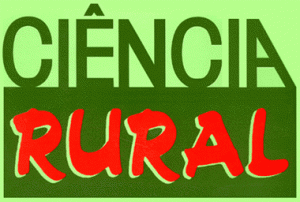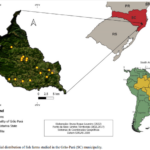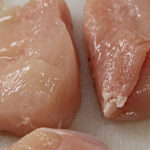Maria Luiza De Grandi, Journalist of Ciência Rural. Santa Maria, RS, Brazil.
Daniel Santiago Rucinque Gonzalez, Veterinarian, Universidade Federal do Paraná (UFPR). Curitiba, PR, Brazil.
 The production of aquatic animals continues to grow around the world. In Brazil, according to statistics pointed out by the Food and Agriculture Organization (FAO), in 2016, 509,285 tons of fish were produced in Brazil from aquaculture, an increase of 5.4% compared to the previous year (FAO, 2018). Among these fish, there is the species Rhamdia quelen, popularly known as Jundiá. In South America, the production of this fish is 1,747 tons per year and, in Brazil, it represents 0.32% of the national aquaculture (BRASIL, 2011).
The production of aquatic animals continues to grow around the world. In Brazil, according to statistics pointed out by the Food and Agriculture Organization (FAO), in 2016, 509,285 tons of fish were produced in Brazil from aquaculture, an increase of 5.4% compared to the previous year (FAO, 2018). Among these fish, there is the species Rhamdia quelen, popularly known as Jundiá. In South America, the production of this fish is 1,747 tons per year and, in Brazil, it represents 0.32% of the national aquaculture (BRASIL, 2011).
With the objective of studying the parameters for electrical stunning in Jundiá (Rhamdia quelen) and its effects on muscle pH and rigor mortis, researchers from Universidade Federal do Paraná (UFPR), in partnership with the Research Station on Fish Farming and Ecology of Native Species of Reservoir of ITAIPU Binacional, developed the research Electrical stunning in Jundiá (Rhamdia quelen) using direct current: welfare and meat quality. The article was published in the Ciência Rural (vo l. 51, no. 8).
“Initially, our research objective was to study the parameters for electrical stunning in Jundiá and its effects on meat quality parameters”, explains scientist Daniel Rucinque. To achieve the objectives, the animals were divided into two different groups of electrical parameters for stunning (125 and 400). In the 125 group, 14.4% (5/35) of the fish were not effectively stunned, in contrast to the 400 group, where 100% of the fish (35/35) were effectively stunned. The duration of unconsciousness was significantly longer in treatment 400. “We did not observe significant differences in the parameters of meat quality evaluated.”, highlights Rucinque.

Image: Daniel Gonzalez
The results are of great importance in practice and can be used as a basis for developing equipment that allows effective fish stunting at an industrial level. “Each species of interest in aquaculture must be studied separately to know these electrical parameters”, explains the researcher. In addition, there is a growing concern among consumers about the origin of the products consumed, both of plant and animal origin.
“Our research brings subsidies to discuss and refine current practices in the slaughter of fish, taking into account their well-being, as well as the urgent need to adapt the slaughter regulations in the country, including fish”, concludes Rucinque. The research brings innovations when compared to other research in the area (VIEGAS et al., 2012). “Other research only focused on the quality of the meat. We wanted an approach to understand the behavior of fish at the time of electrical stunning and thus estimate unconscious states where the animal is insensitive to pain”, he explains.
Read more
BRASIL. Boletim estatístico da pesca e aquicultura [online]. 2011 [viewed 5 April 2022]. Available from: https://www.icmbio.gov.br/cepsul/images/stories/biblioteca/download/estatistica/est_2011_bol__bra.pdf
FAO (FOOD & AGRICULTURE ORGANISATION). FAO yearbook. Fishery and Aquaculture Statistics 2016 [online]. 2018 [viewed 5 April 2022]. Available from: https://www.fao.org/3/i9942t/i9942t.pdf
VIEGAS, E., et al. Métodos de abate qualidade da carne de peixe. Archivos de Zootecnia [online]. 2012, vol. 61, pp. 41-50 [viewed 5 April 2022]. https://doi.org/10.21071/az.v61i237.2957. Available from: https://www.uco.es/ucopress/az/index.php/az/article/view/2957/0
To read the article, access
RUCINQUE, D.S., et al. Electrical stunning in South American catfish (Rhamdia quelen) using direct current waveform: welfare and meat quality. Ciência Rural [online]. 2021, vol. 51, no. 8, e20200547 [viewed 5 April 2022]. https://doi.org/10.1590/0103-8478cr20200547. Available from: https://www.scielo.br/j/cr/a/DRmTTsMvp5C7db5h57xy6wG/?lang=en
Links
Ciência Rural: http://coral.ufsm.br/ccr/cienciarural/
Redes Sociais: Twitter, Instagram, Facebook
Daniel Santiago Rucinque: ResearchGate, LinkedIn, Facebook
Ciência Rural – CR: https://www.scielo.br/j/cr/
Como citar este post [ISO 690/2010]:


















Recent Comments